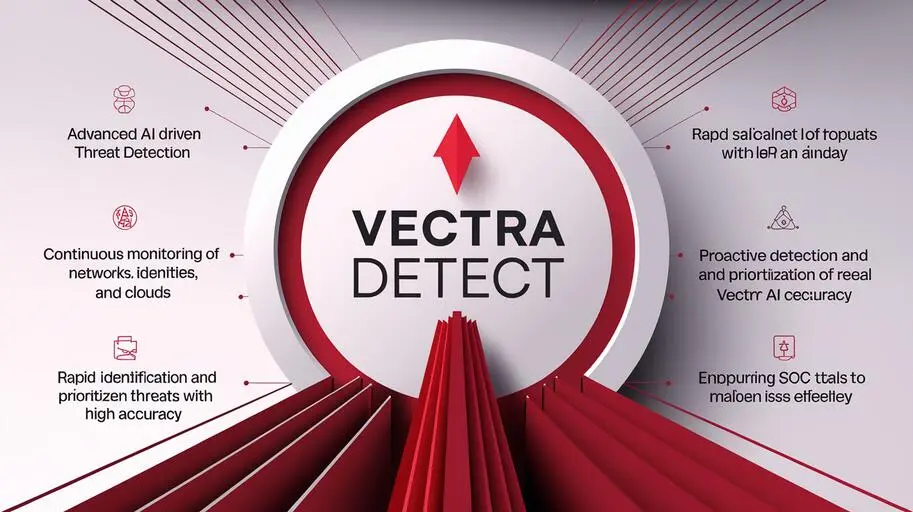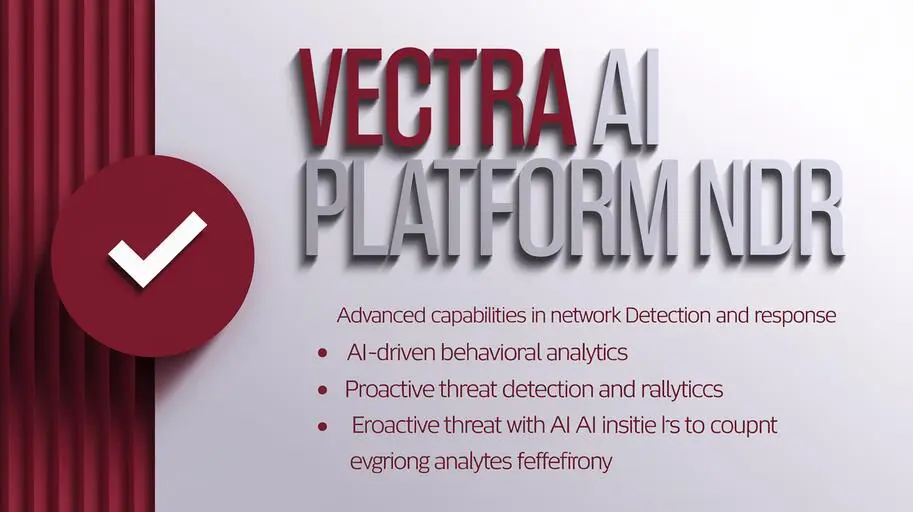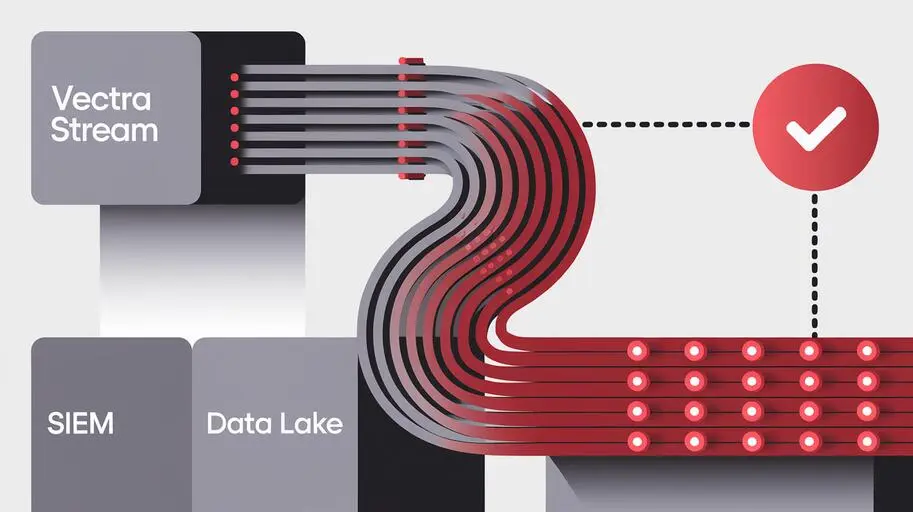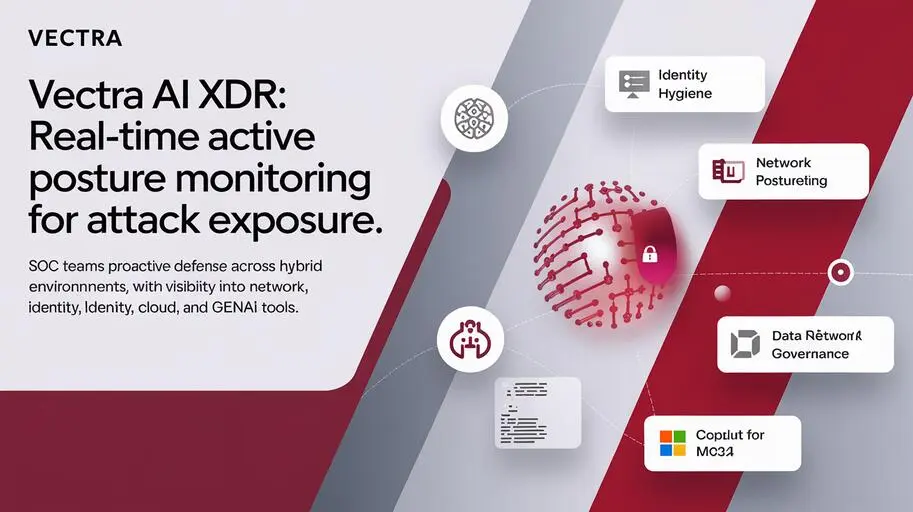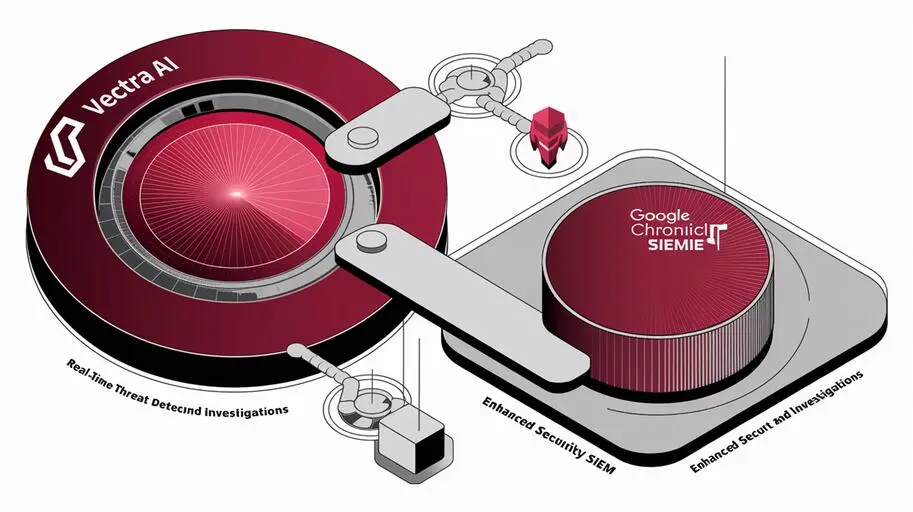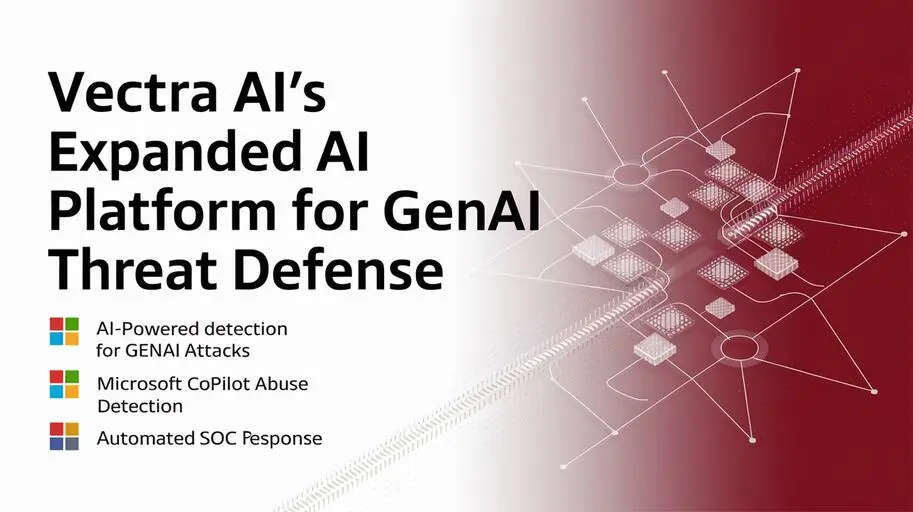
Modern organizations face an unprecedented increase in cyber threats, and the speed of response directly affects the minimization of damage. Delays in detecting and neutralizing attacks lead to financial losses, reputational risks, and confidential data breaches. Vectra AI enables companies to radically reduce response times to threats through a comprehensive approach that includes Vectra Detect, Vectra Recall, and Attack Signal Intelligence. Below, we will examine how these components collectively provide high speed and efficiency in combating cybercrime.
How Vectra AI Helps Reduce Cyber Threat Response Time
The modern cyber threat landscape is characterized by the high speed and complexity of attacks. The faster an organization responds to an incident, the less damage it will cause. Delays in response can lead to serious consequences, including financial losses, reputational damage, and confidential data breaches. Vectra AI offers a comprehensive solution that allows organizations to significantly reduce cyber threat response times by using Vectra Detect, Vectra Recall, and Attack Signal Intelligence.
Vectra Detect: Automated Identification of Priority Threats
Vectra Detect is a key component of the Vectra AI platform, providing automated detection and prioritization of cyber threats. Its operation is based on the principle of behavioral analysis, which allows the identification of anomalous activity in the network, indicating a possible attack. Instead of relying on traditional signature-based detection methods, which are often unable to detect new and complex threats, Vectra Detect uses AI in cybersecurity and machine learning to analyze network traffic data, security logs, and user activity. This allows the detection of even the most complex and disguised attacks. Learn more about Vectra Detect on the product page.
The Principle of Behavioral Analysis
The behavioral analysis used in Vectra Detect is based on creating baseline profiles of normal behavior for each user, device, and application on the network. The system constantly monitors deviations from these profiles, identifying suspicious activity that may indicate an attack. For example, if a user who normally works with certain files and applications suddenly starts accessing other resources or becomes active during off-hours, it may be a sign of account compromise or another incident.
Automatic Threat Prioritization
One of the key advantages of Vectra Detect is automatic threat prioritization. The system assesses the severity of each incident based on a variety of factors, including the type of threat, the potential impact on the business, and the likelihood of a successful attack. This allows SOC analysts to focus their attention on the most important and dangerous events, without wasting time investigating false positives and minor incidents. This process involves ranking threats based on their potential impact and probability of success. For example, an attempt to laterally move from a privileged account will be rated as more critical than an attempt to scan ports from a user’s device.
Threat Detection Detailing
Vectra Detect is capable of detecting a wide range of cyber threats, including:
- Lateral Movement: Detecting attempts by attackers to move around the network in search of valuable resources.
- Credential Theft: Identifying attacks aimed at gaining unauthorized access to user accounts.
- Command and Control Centers: Detecting communication with malicious command and control servers.
- Malware: Identifying infected devices and processes.
- Vulnerability-Based Attacks: Detecting the exploitation of known vulnerabilities in software.
- Insider Threats: Identifying malicious actions by employees.
Examples of Technical Specifications and Algorithms
Vectra Detect uses advanced technologies to detect threats. Detailed technical details can be found in the Vectra AI technical documentation. The system analyzes network traffic, security logs, and user activity, applying various machine learning algorithms, including:
- Anomalous Behavior Analysis: Identifying deviations from normal behavior based on statistical models and machine learning algorithms.
- Network Traffic Analysis: Identifying suspicious patterns in network traffic, such as unusual protocols, ports, and traffic directions.
- Security Log Analysis: Correlating and analyzing logs from various sources to identify signs of compromise.
- User Behavior Analysis: Tracking user activity and identifying deviations from their normal behavior, such as changes in the applications, files, and websites they access.
- Anomaly Detection Based on Deep Learning: Using neural networks to identify complex anomalies that cannot be detected using traditional methods.
For example, network traffic analysis may include monitoring DNS queries for communication with known malicious domains or detecting unusually large amounts of data being transferred to external servers. Security log analysis may reveal multiple failed login attempts, which may indicate a brute-force attack.
Vectra Recall: Accelerated Data Search and Analysis for Investigation
Vectra Recall is a powerful tool for accelerated data search and analysis needed for incident investigation. Additional information is available on the Vectra Recall product page. It allows analysts to quickly find relevant data and get a complete picture of what is happening, which significantly reduces the time required to investigate and respond to threats.
Deep Data Search Capabilities
Vectra Recall provides the ability to perform deep data searches across various parameters, including:
- Keywords: Searching for specific terms and phrases in logs and network traffic.
- IP Addresses: Searching for IP addresses associated with suspected devices and servers.
- Usernames: Searching for usernames involved in the incident.
- Timeframes: Limiting the search to a specific period of time.
- Event Types: Filtering data by event types, such as login attempts, file transfers, and network activity.
The system uses powerful indexes and search algorithms to quickly find relevant data even in large volumes of information. For example, an analyst can use Vectra Recall to search for all interactions of a specific user with a specific server during a specific period of time to identify signs of unauthorized access or data transfer.
Integration with Other Security Tools
Vectra Recall easily integrates with other security tools, such as SIEM (Security Information and Event Management), EDR (Endpoint Detection and Response), and other solutions, providing centralized data analysis. This allows analysts to get a complete picture of threats and coordinate their actions between different systems. Integration with SIEM allows data about incidents detected by Vectra AI to be transferred to a centralized security event management system, providing a single point of view for all security events. Integration with EDR allows you to get additional information about activity on endpoints, which can help in incident investigation.

Data Visualization Capabilities
Vectra Recall provides extensive data visualization capabilities, allowing analysts to better understand the course of an attack and identify patterns. The system can create graphs, charts, and other visual representations of data that make it easier to identify links between different events and participants in the incident. For example, an analyst can use Vectra Recall to visualize network traffic between two devices to see which protocols and ports were used and identify suspicious activity.
Examples of Data Search and Analysis in Real-World Situations
Consider a few examples of using Vectra Recall in real-world situations:
- Data Leak Investigation: An analyst can use Vectra Recall to search for all interactions of a specific user with external servers to identify signs of unauthorized data transfer.
- Malware Detection: An analyst can use Vectra Recall to search for all devices communicating with a specific malicious domain or IP address to identify infected systems.
- Vulnerability-Based Attack Investigation: An analyst can use Vectra Recall to search for all attempts to exploit a specific software vulnerability to identify compromised systems.
Technical Details of Data Indexing and Storage
Vectra Recall uses advanced data indexing and storage technologies to ensure fast access to large volumes of information. The system uses a distributed architecture that allows you to scale the data storage system to meet the organization’s needs. Data is indexed and stored in an optimized format, which allows you to quickly perform search queries even on large datasets. The system also supports data compression, which allows you to reduce storage costs.
Attack Signal Intelligence: Contextual Information for Making Informed Decisions
Attack Signal Intelligence is a threat data enrichment service that provides analysts with additional contextual information about attacks, helping them make more informed response decisions. Learn more about Attack Signal Intelligence on the Vectra AI product page. This Vectra AI component allows analysts to quickly understand the essence of the threat, assess its potential impact, and determine the most effective response measures. Attack Signal Intelligence uses various sources of threat data, including:
- MITRE ATT&CK Tactics: Mapping attacks to tactics, techniques, and procedures (TTPs) described in the MITRE ATT&CK framework.
- IP Address Reputation: Information about the reputation of IP addresses associated with attacks, including information about whether they have been used in malicious campaigns before.
- Information about Known Vulnerabilities: Information about vulnerabilities used in attacks, including their description, severity, and available patches.
- Geographic Location: Information about the geographic location of IP addresses associated with attacks.
The Role of Attack Signal Intelligence in Response Decision-Making
The information provided by Attack Signal Intelligence plays a key role in response decision-making to incidents. Analysts can use this information to:
- Prioritizing Response: Assessing the severity of the threat and prioritizing response based on the potential impact on the business.
- Selecting the Most Effective Response Measures: Determining the most effective response measures based on the type of attack, the tactics and techniques used, and the available vulnerability information.
- Automating Response: Automating certain response measures based on information received from Attack Signal Intelligence.
Examples of Using Attack Signal Intelligence
Consider a few examples of using Attack Signal Intelligence in real-world situations:
- Vulnerability Exploitation Detection: Attack Signal Intelligence can provide information about known vulnerabilities used in the attack, allowing analysts to quickly prioritize the response and apply the necessary patches.
- Identifying a Link to a Known Malicious Campaign: Attack Signal Intelligence can identify a link between the attack and a known malicious campaign, allowing analysts to obtain additional information about the attackers and their goals.
- Determining the Geographic Source of the Attack: Attack Signal Intelligence can provide information about the geographic location of IP addresses associated with the attack, which can help identify the source of the threat and take measures to prevent it.
Integration of Vectra Detect, Recall, and Attack Signal Intelligence
The real power of the Vectra AI platform lies in integrating Vectra Detect, Vectra Recall, and Attack Signal Intelligence. These three components work together to provide comprehensive protection against cyber threats and reduce response times.
End-to-End Incident Response Scenario
Consider an example of an end-to-end incident response scenario:
- Threat Detection: Vectra Detect detects suspicious activity on a user’s device, indicating a possible malware infection.
- Analysis and Investigation: The SOC analyst uses Vectra Recall to search for all interactions of the device with other systems on the network and external servers to determine the extent of the malware’s spread.
- Data Enrichment: Attack Signal Intelligence provides additional information about the malware, including its type, functionality, and known vulnerabilities that it exploits.
- Incident Response: Based on the information received, the analyst decides to isolate the infected device, remove the malware, and apply the necessary patches to prevent further spread of the threat.
Benefits of Synergy Between Components
The synergy between Vectra AI components provides the following benefits:
- Faster Detection: Vectra Detect automatically identifies priority threats, allowing analysts to respond to incidents faster.
- Deeper Investigation: Vectra Recall provides quick access to relevant data needed to investigate incidents.
- More Effective Response: Attack Signal Intelligence provides additional contextual information about attacks, helping analysts make more informed decisions about how to respond to incidents.
As a result, the organization can significantly reduce cyber threat response times, minimize damage, and improve its overall cybersecurity.
Conclusion
Vectra AI is a comprehensive solution designed to significantly reduce cyber threat response times. Through the synergy of Vectra Detect, responsible for automatic anomaly detection, Vectra Recall, offering deep data analysis for investigations, and Attack Signal Intelligence, providing contextual information for sound decision-making, the platform offers comprehensive protection. Rapid response is critical to protecting businesses from financial losses, reputational damage, and data breaches. To learn more about how Vectra AI can protect your organization, visit the official Vectra AI website and request a demo today.
Frequently Asked Questions About Reducing Cyber Threat Response Time with Vectra AI
What is Vectra AI and how does it help in cybersecurity?
Vectra AI is a comprehensive cybersecurity solution that leverages behavioral analysis, machine learning, and threat intelligence enrichment to automatically detect, prioritize, and investigate cyber threats. It helps organizations significantly reduce incident response time.
What are the main components of the Vectra AI platform?
The Vectra AI platform includes three main components: Vectra Detect (automatic threat detection), Vectra Recall (accelerated search and data analysis for investigations), and Attack Signal Intelligence (contextual information for informed decision-making).
How does Vectra Detect identify cyber threats?
Vectra Detect uses behavioral analysis and machine learning to identify anomalous activity in the network that indicates potential attacks. The system creates baseline profiles of normal behavior for each user, device, and application, and then tracks deviations from these profiles.
What is Vectra Recall and how does it help in incident investigation?
Vectra Recall is a tool for deep search and analysis of data needed for incident investigation. It allows analysts to quickly find relevant data by various parameters (keywords, IP addresses, usernames, timeframes, event types) and get a complete picture of what is happening.
What role does Attack Signal Intelligence play in the cyber threat response process?
Attack Signal Intelligence provides analysts with additional contextual information about attacks, including MITRE ATT&CK tactics, IP address reputation, information about known vulnerabilities, and geographic location. This helps them make more informed response decisions and prioritize actions.
How do the Vectra AI components integrate with each other?
Vectra Detect, Vectra Recall, and Attack Signal Intelligence work together to provide comprehensive protection against cyber threats. Vectra Detect detects threats, Vectra Recall provides data for investigation, and Attack Signal Intelligence enriches this data with contextual information. This integration allows for faster detection, investigation, and response to incidents.
What are the benefits of using Vectra AI for an organization?
Using Vectra AI allows organizations to significantly reduce cyber threat response time, minimize damage from attacks, increase SOC efficiency, automate incident detection and investigation processes, and improve overall cybersecurity.
Where can I get more information about Vectra AI and request a demo?
More information about Vectra AI can be found on the official Vectra AI website. You can also request a demo version of the product there.
